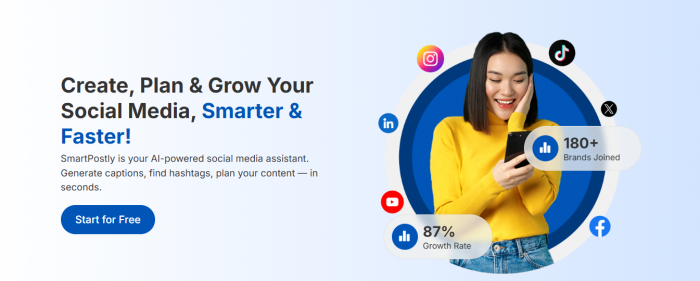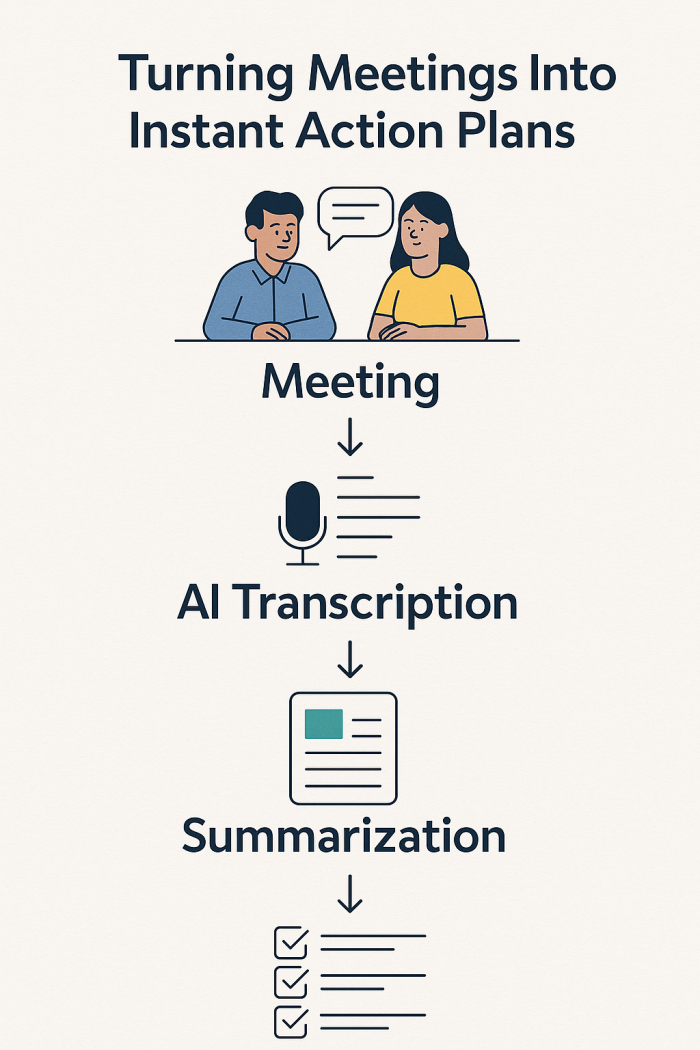Table of Content
- AI Productivity Tools for Small Businesses and Startups
- How AI Reduces Workplace Burnout
- Turning Meetings Into Instant Action Plans
- Best AI Tools for Remote Teams
- Using AI for Smarter Decision-Making
- Real-Life ROI from AI Adoption
- Common Mistakes to Avoid When Using AI at Work
- Security and Privacy Concerns with AI Tools
- Case Studies: Companies Boosting Productivity with AI
- Free vs Paid AI Productivity Tools: Which Should You Choose?
- AI-Powered Time Management Hacks
- Real-World Voices From the Productivity Trenches
- The Future of AI-Powered Workflows
“Don’t work harder than you have to—work smarter so you can live better.”
For years, I thought productivity meant more hours, more hustle, and more to-do lists. But reality hit: being busy doesn’t mean being effective. The real breakthrough came when I started treating AI like a co-worker—one that never gets tired, never complains, and always delivers.
AI Productivity Tools for Small Businesses and Startups
Small businesses often run on tight budgets and tighter schedules. Every wasted hour can feel like a setback. That’s why AI can be really innovative even for lean teams. Tools like SmartPostly can handle social media content creation, from captions to hashtags, freeing business owners to focus on sales or customer service.

For instance, a local café owner I know automated their Instagram posting using SmartPostly. Within three months, their engagement doubled—not because they were posting more, but because AI helped them post better, with strategic timing and consistent branding. Paired with Microsoft 365 Copilot for email drafting and document creation, they eliminated hours of repetitive admin work each week.
“It’s not the hours you put in, it’s what you put into the hours.”
And while automation can save hours, the real magic happens when it also helps reduce the mental strain of repetitive work—bringing us to the next point: AI as a burnout buster.
How AI Reduces Workplace Burnout
Workplace burnout often comes from constant context-switching—replying to emails, attending meetings, then jumping back into deep work. This mental load is exhausting. AI can lift some of that weight.
Take Slack AI. One consulting firm I worked with used it to auto-summarize meeting threads and draft follow-up messages. This eliminated dozens of “What did we decide?” emails every week. Within three months, stress-related sick days dropped by 15%, and employees reported feeling more in control of their schedules.
“Rest is not a luxury. It’s part of the work.”
Once burnout is under control, the next big drain on time—inefficient meetings—can be tackled with AI meeting assistants.
Turning Meetings Into Instant Action Plans
Meetings should be about decisions, not documentation. A project team I joined used Otter.ai integrated with Slack to auto-transcribe every meeting, highlight key decisions, and assign tasks automatically. What once took 45 minutes of note-taking became a 2-minute review of an AI-generated action list.

Even Forbes Tech Council notes that AI-driven meeting summarization speeds up decision-making by giving teams instant clarity without wasting hours. This keeps everyone on the same page, literally and figuratively.
Once your meetings are under control, the next challenge is bridging communication gaps—especially for remote or hybrid teams.
Best AI Tools for Remote Teams
Remote work can be productive… or painfully disorganized. Without the right systems, information gets buried in endless threads and private chats. That’s why tools like FlexOS AI are essential. They create searchable knowledge hubs from scattered messages, making it easy for team members in different time zones to find what they need.
I saw this in action with a software development team spread across five countries. Instead of wasting hours on “catch-up calls,” developers used FlexOS AI to pull up past project decisions instantly. This kept work moving 24/7 without forcing late-night calls.
And when communication is smooth, the next step is using AI for something even more powerful—making better business decisions faster.
Using AI for Smarter Decision-Making
Business success often hinges on making the right call quickly. But when data is overwhelming, decisions slow down. In one retail company I worked with, our sales team used generative AI analysis to review three years of sales data in Excel.
Normally, this would’ve taken two weeks of manual work. AI delivered the analysis in under an hour—highlighting slow-moving products and identifying top-performing SKUs. We acted immediately, clearing old stock with targeted promotions and boosting sales by 14% in a single quarter.
Of course, better decisions mean little without a clear return on investment—which is exactly what we’ll explore next.
Real-Life ROI from AI Adoption
Nimblework’s research shows that with the right strategy, AI adoption can deliver ROI in as little as 60 days.
I worked with a law firm that integrated AI-powered contract review. What used to take junior lawyers hours now took minutes—with AI flagging risky clauses for human review. This cut contract turnaround times by 50% and let senior lawyers focus on high-value negotiations instead of boilerplate checks.
But as with any powerful tool, there are risks—so knowing common pitfalls is just as important as knowing best practices.
Common Mistakes to Avoid When Using AI at Work
AI can supercharge productivity, but only if used wisely. Here are three mistakes I see often:
- Over-adoption: Adding too many tools at once creates confusion instead of clarity.
- Blind trust: AI is fast, but it still needs human verification to avoid costly mistakes.
- Ignoring security: Not all AI platforms handle sensitive data safely.
This leads us to an equally important consideration—protecting your data and ensuring privacy when using AI.
Security and Privacy Concerns with AI Tools
Before adopting any AI tool, I always check: Where is the data stored? Is it encrypted? Who has access?
Enterprise solutions like Microsoft 365 Copilot offer end-to-end encryption, while some free tools store data externally, which can be risky for confidential projects.
With security measures in place, AI can safely be deployed in high-impact areas—like those showcased in real-world case studies.
Case Studies: Companies Boosting Productivity with AI
- Retail: AI inventory prediction reduced stockouts by 18% in six months.
- Finance: Automated data extraction cut report prep from 5 hours to 20 minutes.
- Marketing: AI-driven A/B testing increased click-through rates by 22%.
And whether you go for free or premium tools depends on your needs—something worth breaking down next.
Free vs Paid AI Productivity Tools: Which Should You Choose?
Free AI tools are perfect for testing workflows, but when reliability and advanced features matter, paid tools are worth it. Paid plans often bring better integrations, more accurate outputs, and faster support. Think of it as renting versus owning—you can get by with the former, but the latter is built for the long haul.
And no matter which you choose, AI can completely transform how you manage your time.
AI-Powered Time Management Hacks
AI can:
- Auto-prioritize tasks based on urgency and deadlines.
- Block focus time in your calendar automatically.
- Remind you of tasks when related events occur.
I use an AI assistant that notices when I’m overcommitted and suggests moving non-urgent tasks. It’s like having a personal project manager in my pocket.
And these aren’t just my thoughts—real users across communities are seeing similar results.
Real-World Voices From the Productivity Trenches
On Reddit’s productivity forum, users share their wins:
“ChatGPT has saved me TONS of time on copy, scripts, and job interview prep.”
“Hive Mind helped me anticipate what I was forgetting… soooo much time saved!”
These stories point to a bigger picture: AI’s role isn’t just to help today—it’s shaping how we’ll work tomorrow.
The Future of AI-Powered Workflows
AI is evolving from reactive (waiting for prompts) to proactive (anticipating needs). Soon, your tools won’t just help you when you ask—they’ll act before you even realize you need help. That’s when “working smarter, not harder” becomes the default, not the exception.


